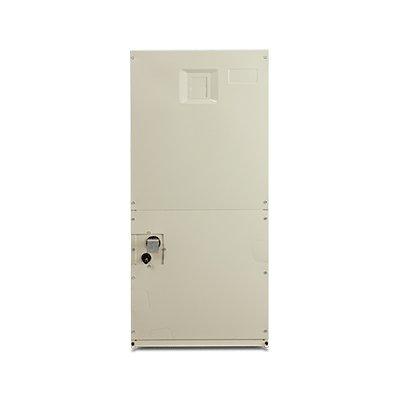Users might not think of the dryer as a safety hazard, but it can pose a serious threat in the wrong circumstances. The U.S. Fire Administration estimates that close to 3,000 fires annually are linked to clothes dryers. Of these, a failure to carry out regular dryer vent cleaning is to blame for 34% of cases.
If a user has never cleaned a dryer vent before, or if they are overdue for a cleaning and need a refresher, consider this a wake-up call. Here’s how to clean the dryer vent to ensure the family’s safety:
1) Unplug Your Dryer
To avoid a nasty shock, make sure to unplug the dryer from its wall outlet before getting started. If an appliance is gas-powered, turn off its gas valve instead.
2) Move the Dryer Away From the Wall
With help, move the unit away from the wall. Once the user has room to get around the back, locate the vent duct and disconnect it from the back of the dryer.
3) Clean Off the Lint
A quality dryer vent cleaning kit helps remove the tiny fibers clinging to the duct
For this step, make sure the user is using the right equipment. If they’re going to do this job right, it’s worth investing in a tool designed to help.
A quality dryer vent cleaning kit helps remove the tiny fibers clinging to the duct, and most come with handy attachments that attach to the end of the vacuum cleaner. Users can find one online or at most home improvement stores.
DIY version of HVAC duct cleaning
To clean off lint, users will want to move the brush in circles through the vent pipe, dryer opening, and wall piping. Think of it as the DIY version of HVAC duct cleaning: users want to remove anything attached to the walls of the pipe.
As users clean, make sure to avoid bending the duct too much, as cracks and crevices will become breeding grounds for more lint accumulation in the future. Users should also inspect the duct for any signs of wear or damage, which users will want to patch up.
Dryer maintenance
Users can also remove the vent cover from the outside of the home to clean it as well
While users are cleaning, take time for a little extra dryer maintenance and clear the dust from other areas as well. This includes a moisture sensor that helps the dryer function and may appear as a thin metal bar under the door.
As the last step, users can also remove the vent cover from the outside of the home to clean it as well. Not all homeowners have a removable cover, but they can at least remove dust, dirt, or debris. If the dryer has a complicated or lengthy vent, basic equipment may not be enough. When users are worried the DIY tools aren’t enough to handle the job, call for a dryer cleaning team for peace of mind.
4. Reattach the Duct
Reattach the duct to the wall and the dryer unit with the proper screws or clips. Users can also use aluminum tape as needed rather than duct tape, as the latter can become a sticky mess with the dryer’s heat.
Return the dryer to its normal position, and turn the electricity or gas back on.
5. Repeat
Just as users expect to do seasonal preventative maintenance on the HVAC, the average homeowner should clean their dryer vent every six months to a year. However, if they have a large household that goes through a lot of laundries, users may want to come back more often, just to be safe.
Add Dryer Vent Cleaning to Home Checklist
While it’s easy to overlook the humble clothes dryer, dryer vent cleaning is a critical item to add to the home maintenance checklist. Not only can this make the dryer more efficient (and save the wallet from high utility bills), but it can also ensure the safety of the home. Don’t skip the regular cleanings.




















